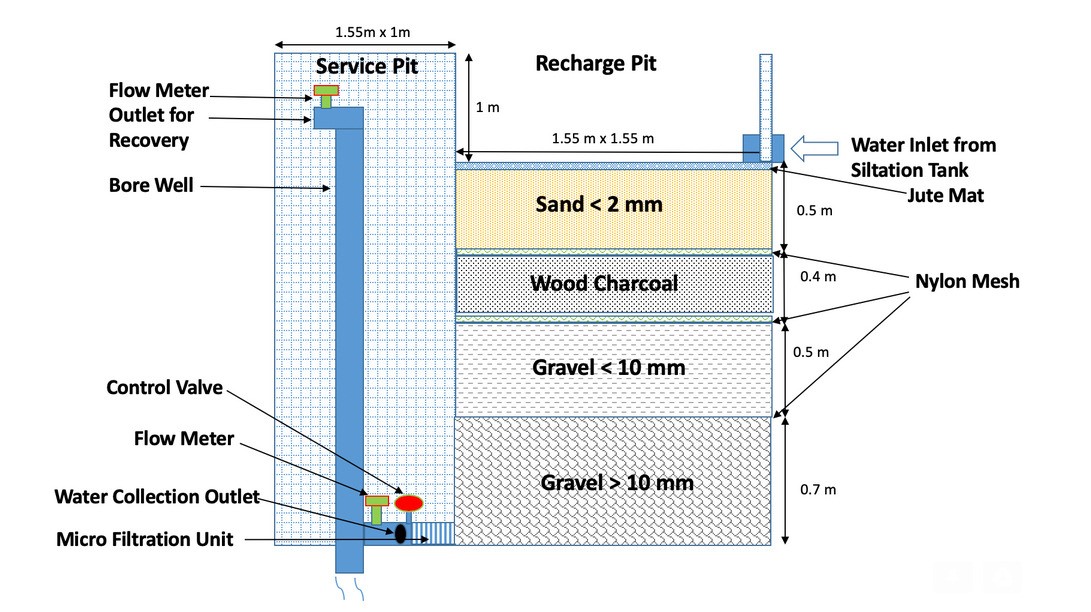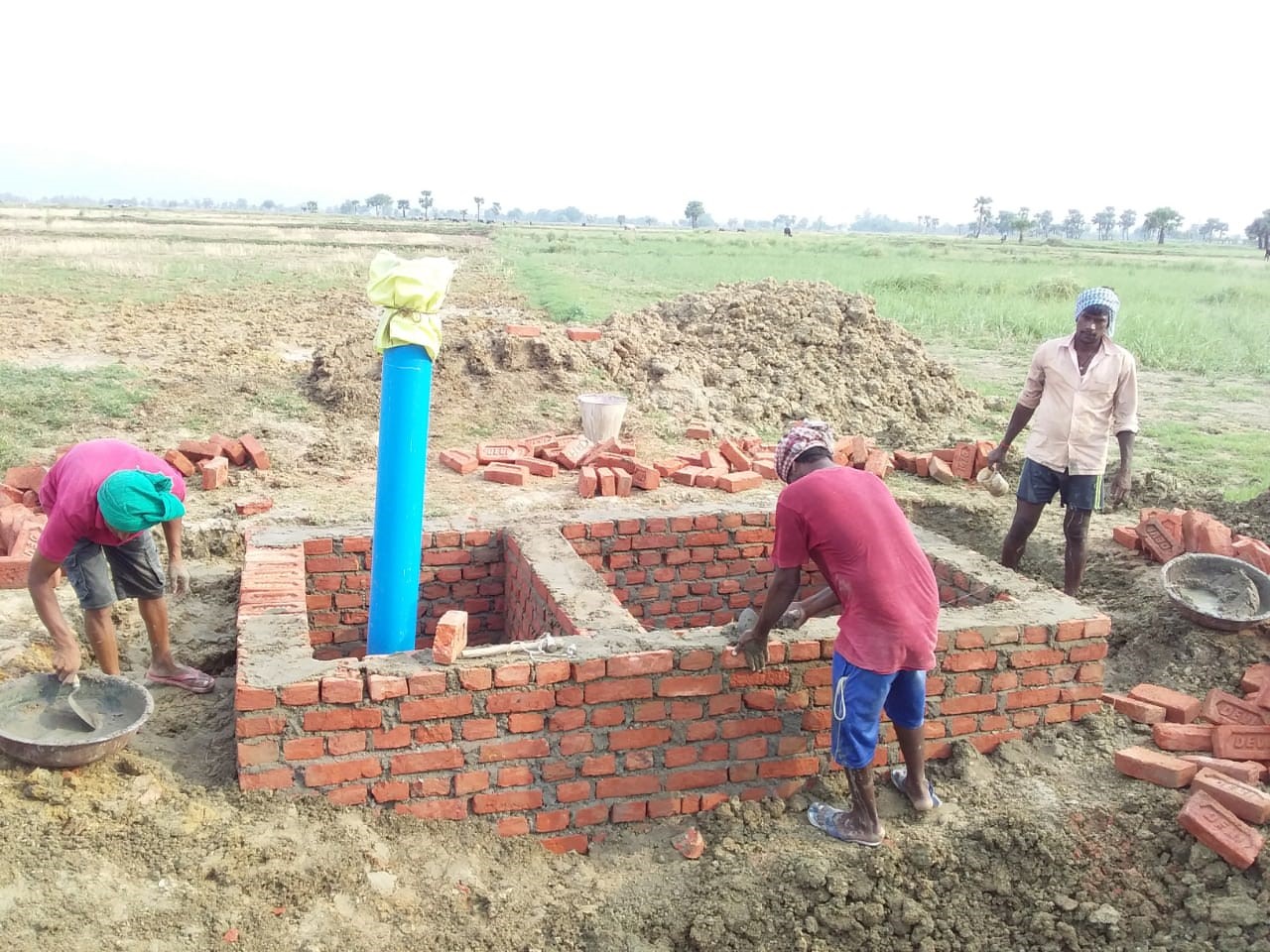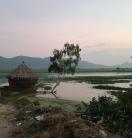Aquifers recharge India’s groundwater
An ACIAR-supported project has successfully developed a system to store more groundwater in South Bihar—an agricultural region of India—to help alleviate water scarcity.
The Aquifer Storage and Recovery system puts more water into an aquifer located at a pilot site where there is often not enough water for essential needs during the dry season.
The system—which comprises a deep recharge pit connected to a borewell—allows the aquifer to be recharged in the wet season.
South Bihar is one of the most water-challenged regions in India, with rural communities facing increasing amounts of floods and droughts due to the worsening impacts of climate change.
With local agricultural production depending heavily on rainfed irrigation, farming communities must develop methods to capture monsoonal rains to sustain crops throughout the dry season.
Dr Robyn Johnston manages the ACIAR Water Research Program which focuses on water management to support the sustainable intensification of agriculture.
‘In many areas in India, this means managing water to allow a second crop during the dry (non-monsoon) season,’ Dr Johnston said.
The pilot ran in Nalanda district, where most of the annual rainfall comes during the monsoon season (May to October) and much of this runs off to rivers.
‘This project aims to demonstrate small-scale, simple technology that allows excess rainfall during the monsoon to be retained and stored as shallow groundwater, then recovered during the dry season for domestic use or irrigation,’ Dr Johnston said.
The system is low cost and built with locally available materials. It was designed to be maintained easily and to last a long time.
The project team collaborated with local farming communities to develop a new method of selecting sites.
Farmers were trained to take collective action to maintain the recharge pit of the Aquifer Storage and Recovery system.
This project is part of the Sustainable Development Investment Portfolio (SDIP) program, which is jointly funded by Australia’s Department of Foreign Affairs and Trade and ACIAR.
‘We’re really impressed with the results so far and are pleased to see local farming communities buying-in to the new approach,’ said Dr Kuhu Chatterjee, ACIAR SDIP Program Coordinator, based in India.
‘In the long-term, development of recharge pits could benefit of farming communities in similar agroclimatic regions by improving access to irrigation and drinking water, as well as environmental benefits. There is lot of scope in fine-tuning with better hydrological research in the coming years.’
The project team will continue to refine the system through PhD and Masters students at Nalanda University. The relationships developed with community members will help the university students to conduct their research in the local villages for the next several years.
‘We are committed to long-term, multidisciplinary studies on the food systems of the region, and aquifer storage and recovery forms a key component in this endeavour. Water quality, ecosystem services, and institutional sustainability are some of the future areas of research,’ said Dr Prabhakar Sharma, Assistant Professor from Nalanda University, who led the project.
The students also utilise the database created by the project team, which captured water level, water quality, groundwater usage, farming practices and more.
This database is the foundation of long-term monitoring for the water level and quality changes during the Aquifer Storage and Recovery system’s operation.
Dr Chatterjee said the project team is planning to write up policy briefs for the State Government of Bihar to help scale the technology.
She said the joint ownership of recharge pits, if proved successful, could become the ‘go to way’ for adoption of new technology among farmers and other villagers.
‘This joint ownership gives them the opportunity to cut costs and gain benefits through rule-based sharing.’
Dr Chatterjee said the current model was initially likely to be adopted mostly by larger farmers.
‘However, in the longer run, we expect adoption possibilities even at community, village and institutional level.’
Progressive farmer from Nekpur village, Mr Shyam Prasad, said ‘the Aquifer Storage and Recovery system in this region could be a way to revive failed bore wells and protect farmers' investments.’
Read more about the is project on the ACIAR website and the project website, to which more water level data will be uploaded soon.





